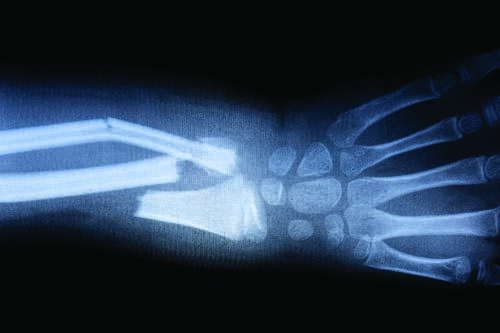Treating broken bones

If you suspect a co-worker has a broken bone, refrain from moving the person to avoid further injury. Then, while waiting for help, follow these steps from Mayo Clinic:
- If the victim is bleeding, apply pressure to the wound using a sterile bandage, clean cloth or item of clothing.
- Immobilize the wound. If you’re trained and medical help isn’t readily available, apply a splint to the area above and below the fracture.
- Never attempt to realign a bone or push back in a bone that’s sticking out.
- If available, apply an ice pack to help limit swelling and relieve pain – but never directly to the skin. Instead, wrap the ice pack in a towel or other material.
- Monitor the victim for shock. If he or she reports or appears to be feeling faint, or is taking short, rapid, panting breaths, lay the victim down with the head slightly lower than the trunk. Elevate the legs.
From the "First Aid, CPR and AED" course offered by the National Safety Council. Learn more about NSC first aid training – including online and classroom training for learners, and courses and materials for instructors. © 2015 National Safety Council
Although all injuries involving broken bones require medical attention, some are more serious. Mayo Clinic advises calling 911 or your workplace emergency number in these instances:
- The injured worker isn’t responsive, breathing or moving. (Begin CPR if the victim isn’t breathing or a heartbeat can’t be detected.)
- Bleeding is heavy.
- Even gentle pressure causes pain.
- The victim’s limb or joint looks deformed.
- The broken bone has pierced the skin.
- The extremity of the injured limb, such as a toe or finger, is numb or bluish.
- You suspect the worker has broken a bone in his or her neck, head or back.
Post a comment to this article
Safety+Health welcomes comments that promote respectful dialogue. Please stay on topic. Comments that contain personal attacks, profanity or abusive language – or those aggressively promoting products or services – will be removed. We reserve the right to determine which comments violate our comment policy. (Anonymous comments are welcome; merely skip the “name” field in the comment box. An email address is required but will not be included with your comment.)

